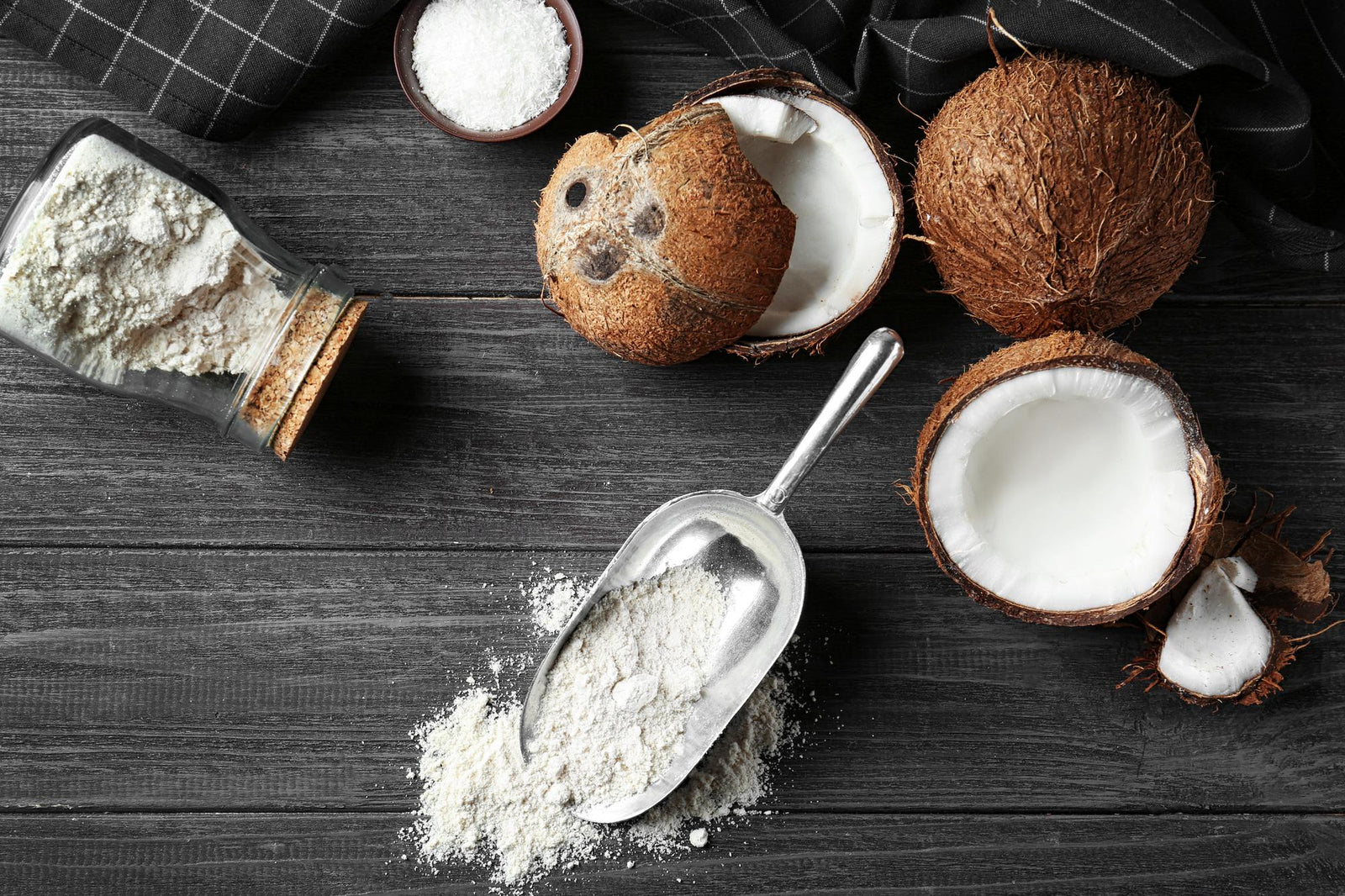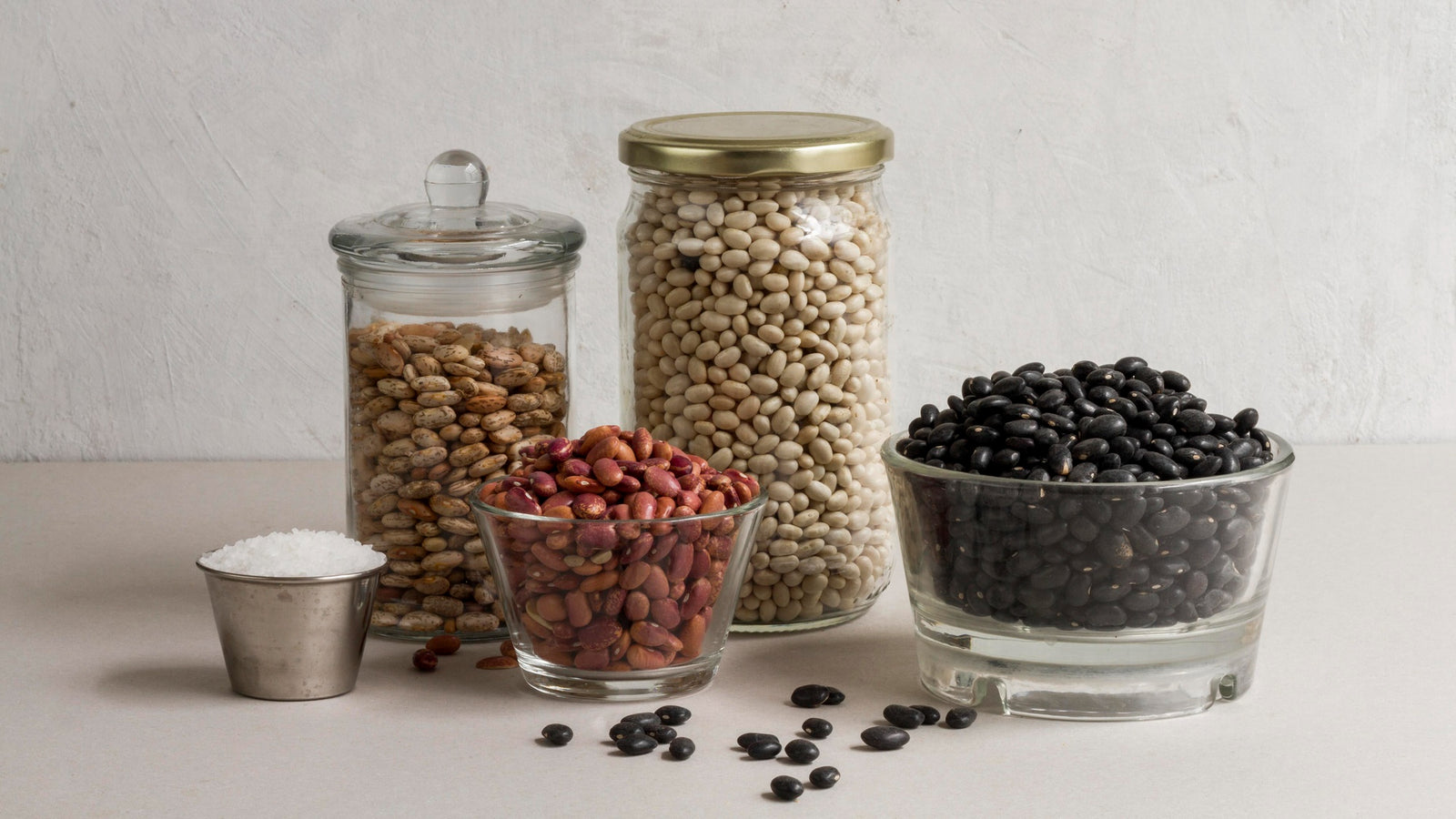
March 20, 2024 3 min read
In recent years, coconut flour has emerged as a popular alternative to traditional wheat flour, celebrated for its nutritional benefits, unique flavor, and versatility in baking. Derived from the dried, defatted coconut meat, coconut flour offers a host of health advantages that make it a favorite among health-conscious bakers. In this article, we explore the many reasons to embrace coconut flour in your baking endeavors and share delicious recipes that showcase its wholesome goodness.

Nutritional Benefits of Coconut Flour
One of the most notable attributes of coconut flour is its impressive nutritional profile. Unlike refined wheat flour, coconut flour is naturally gluten-free, making it an excellent choice for those with gluten sensitivities or celiac disease. Additionally, coconut flour is rich in fiber, which supports digestive health, promotes feelings of fullness, and helps regulate blood sugar levels. It also contains beneficial fats, including medium-chain triglycerides (MCTs), which are known for their potential to boost metabolism and support heart health.
Lower in Carbs, Higher in Protein
Another advantage of coconut flour is its lower carbohydrate content compared to traditional flours. This makes it a popular choice for individuals following low-carb or ketogenic diets. Additionally, coconut flour is relatively high in protein, providing essential amino acids necessary for muscle repair and growth. By incorporating coconut flour into your baked goods, you can enjoy delicious treats with a lower glycemic index and a more balanced macronutrient profile.
Enhanced Flavor and Texture
In addition to its nutritional benefits, coconut flour adds a unique flavor and texture to baked goods. It imparts a subtle coconut taste that pairs well with both sweet and savory recipes, lending a tropical twist to your creations. Coconut flour also absorbs more liquid than traditional flours, resulting in moist and tender baked goods with a delicate crumb. Whether you're making muffins, pancakes, or cookies, coconut flour elevates the taste and texture of your favorite treats.

Ready to start baking with coconut flour? Here are a few delicious recipes to get you started:
Coconut Flour Banana Bread: This moist and flavorful banana bread is made with ripe bananas, coconut flour, and a touch of honey for natural sweetness.
Coconut Flour Blueberry Muffins: Bursting with juicy blueberries and coconut flavor, these gluten-free muffins are perfect for breakfast or snacking on the go.
Coconut Flour Chocolate Chip Cookies: Indulge your sweet tooth with these chewy and decadent chocolate chip cookies, made with coconut flour and almond butter for added richness.
Coconut Flour Pancakes: Start your day off right with these fluffy and nutritious pancakes, made with coconut flour, eggs, and coconut milk for a delightful tropical twist.
In Conclusion
Baking with coconut flour opens up a world of delicious possibilities, allowing you to create wholesome treats that are both nutritious and satisfying. Whether you're looking to reduce your carb intake, experiment with new flavors, or simply enjoy healthier baked goods, coconut flour is a versatile ingredient that deserves a place in your kitchen. So why not embrace the deliciously healthy world of coconut flour and elevate your baking game today?
❤ Try our USDA certified organic Coconut Flour ❤
Related Blogs:
Comments will be approved before showing up.

April 24, 2024 3 min read
This article explores the unique characteristics and culinary uses of pinto beans, small red beans, and black beans. Highlighting their distinct flavors, textures, and nutritional profiles, the piece delves into how each bean fits into different regional cuisines and cooking methods. From the creamy texture of pinto beans in Mexican dishes to the firmness of small red beans in Caribbean meals and the robustness of black beans in Latin American recipes, this guide offers a comprehensive look at these versatile staples in global kitchens.

April 22, 2024 3 min read
This article traces the journey of organic kasha, also known as toasted buckwheat groats, from its cultivation as a seed to its role in sustainable agriculture and its culinary uses on the dining table. Highlighting the eco-friendly farming practices and nutritional benefits, it delves into how kasha supports both personal health and environmental sustainability. Rich in protein, fiber, and essential nutrients, kasha is celebrated for its unique flavor and versatility in dishes ranging from traditional Eastern European recipes to modern health-conscious meals.

April 17, 2024 3 min read
© 2024 Be Still Farms- Real, Fine Organics.
Privacy | Terms | Refund Policy | Organic Certification
